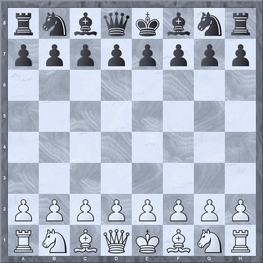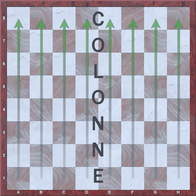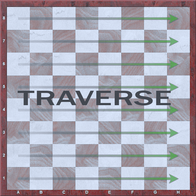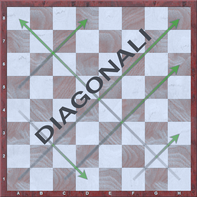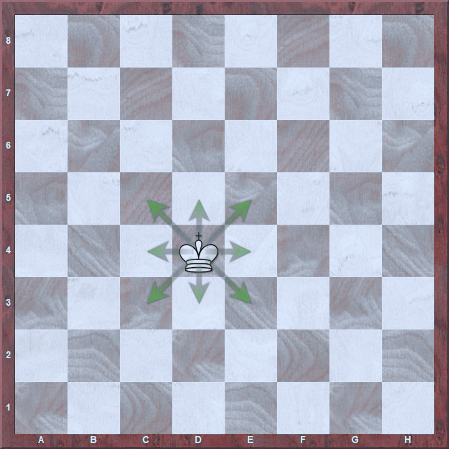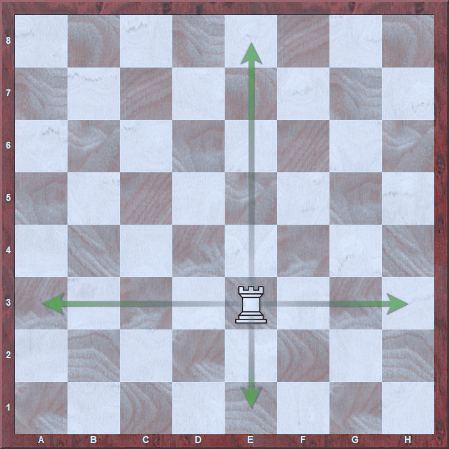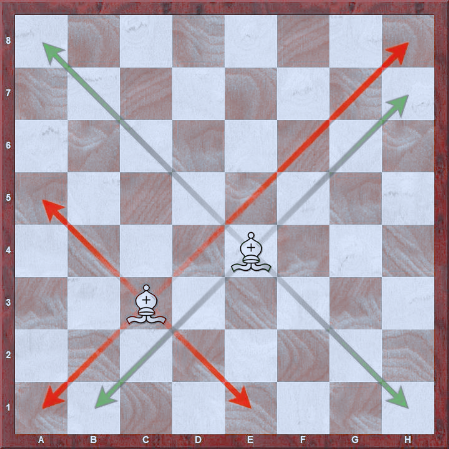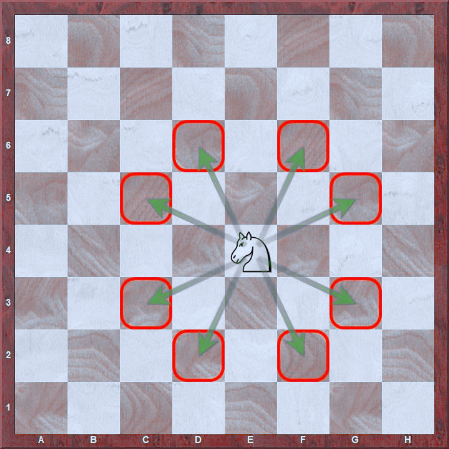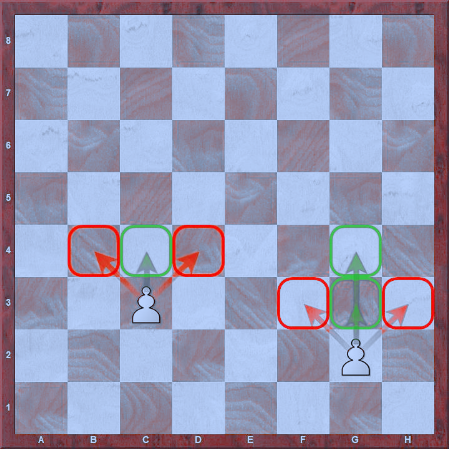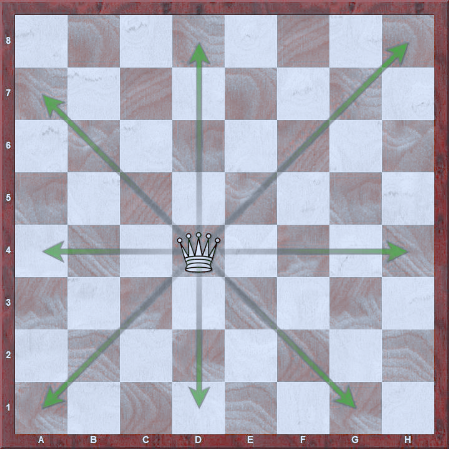STARTING A GAME
At the beginning of the game, the chessboard is arranged so that each player has a white (or light-colored) square in the lower right-hand corner. The pieces are always arranged in the same order. The second horizontal row (or rank) is occupied by pawns. On the first row, starting from the two opposite corners, the rooks are placed first, followed by the knights, the bishops, and finally the queen, which always occupies a square of its own color [white queen on a white square and black queen on a black square]. The king is placed in the last remaining square. The player with the white pieces always moves first. For this reason, players usually draw lots to determine who will play with the white pieces. At this point, White will make its move, followed by Black: then White will move again and then Black again... and so on until the end of the game.
